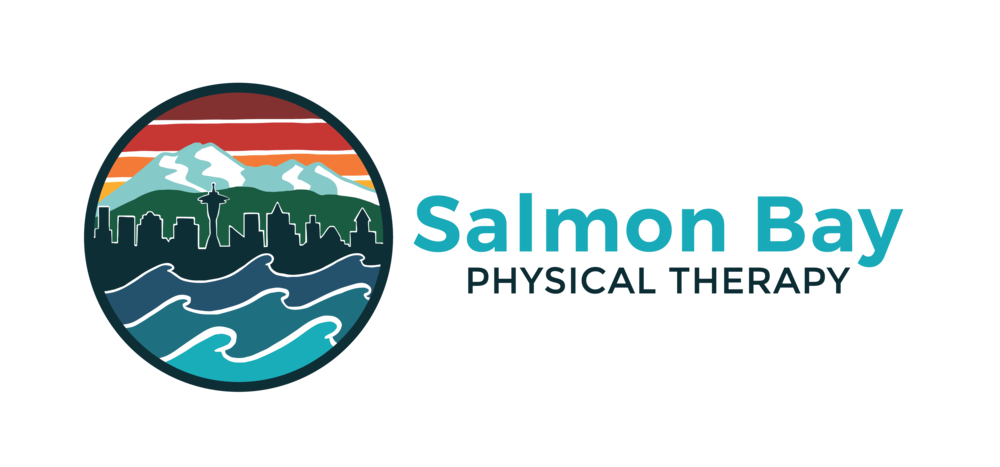At Salmon Bay Physical Therapy our top priority is keeping our local community strong and healthy. Due to the recent COVID-19 pandemic and social distancing orders we are providing virtual physical therapy appointments through a secure online telehealth platform on a case-by-case basis. Telehealth appointments allow us the opportunity to continue to provide skilled one-on-one physical therapy treatment to reduce pain and improve function, while keeping our community and staff healthy during the public health crisis. Below is a frequently asked questions section surrounding telehealth:
Is telehealth physical therapy new?
Telehealth has been around for many years and is used all over the world to provide physical therapy care to people unable to meet with a provider in person. This includes people living in rural or remote settings and people who would rather receive treatment from the comfort of their own homes. There are some physical therapy companies that provide care and improve their client’s function strictly through telehealth services.
Are telehealth physical therapy appointments covered by my insurance?
Most health insurance plans are covering telehealth physical therapy services during the COVID-19 pandemic. In Seattle, this includes Premera, Cigna, Kaiser, Regence, Aetna, L&I, and BCBS Boeing. If you have specific questions about your coverage please contact your local physical therapy office.
What conditions can telehealth physical therapy help with?
Telehealth physical therapy can help in the treatment of a variety of orthopedic conditions, including treatment of injuries to joints, muscles, bones, ligaments, and tendons. Telehealth physical therapy can provide you with functional exercises to build strength, flexibility, and/or stability in order to decrease pain and improve function. Telehealth physical therapy can also be used to help people recover from surgery, improve their balance in order to decrease the risk of falling, or work on improving more chronic injuries.
Does telehealth physical therapy work?
There have been several research studies performed that have found telehealth physical therapy to be a viable treatment option for people with various musculoskeletal conditions. Some of these study findings are summarized below:
Telehealth physical therapy is a viable option for people with chronic low back pain in long-term management of their condition (1).
Telehealth physical therapy can significantly improve functional independence, cognition, and patient satisfaction (2).
Patients treated for musculoskeletal conditions through telehealth physical therapy demonstrated improvements in movement and function in a few visits and maintained these improvements after 3 months (3).
Patients who received telehealth physical therapy following knee replacement reported similar clinical outcomes and satisfaction compared with patients who received in-person care (4).
How can a physical evaluation be performed via telehealth?
A physical therapy evaluation always begins with a ‘subjective assessment’ which includes a discussion of the history of your injury or condition and a series of specific questions about your symptoms and limitations. Through the subjective assessment a physical therapist will often reach a probable diagnosis before ever touching a patient.
A physical therapist can then perform an ‘objective assessment’ that will include watching how you move while watching you perform certain activities (reaching, standing on one leg, squatting, bending, moving around in bed, etc). This movement assessment will help the therapist determine your range of motion or strength impairments. This functional movement assessment can help the physical therapist better determine your probable diagnosis along with your physical and functional impairments. The physical therapist can then develop a plan of care to work on decreasing your symptoms and improving your function from the comforts of your home.
What about manual therapy and hands on treatment?
Hands on treatment through manual therapy is a small piece of a physical therapy plan of care. In many cases there are exercise alternatives to manual therapy that can help decrease muscle tension, improve joint range of motion, and ultimately help decrease pain and improve movement. Physical therapy exercises are oftentimes much more important in promoting lasting changes in pain and function. Self-performed manual therapy techniques can also help put you in control of alleviating your symptoms.
What type of equipment do I need to complete a telehealth visit?
To complete a telehealth visit you will need:
Computer or smartphone with a camera/webcam and an internet browser
Access to a good internet connection
A quiet and private location with enough space to move around comfortably
Comfortable, loose fitting clothes
Any resistance bands or small weights available. If you do not have this equipment, that’s OK! Your therapist will have alternative ideas for resistance based on what you have available at home. We may also be able to deliver resistance bands to your home as needed.
Stay healthy!
REFERENCES
Telerehabilitation Booster Sessions and Remote Patient Monitoring in the Management of Chronic Low Back Pain: A Case Series [Physiother Theory Pract. 2018;34(5):393–402.]
Effects of Physical Therapy Delivery Via Home Video Telerehabilitation on Functional and HealthRelated Quality of Life Outcomes [J Rehabil Res Dev. 2015;52(3):361–370.]
Case Studies in Physical Therapy: Transitioning a “Hands-On” Approach Into a Virtual Platform [Int J Telerehabil. 2018;10(1):37–50.]
Clinical Outcomes of Remote Asynchronous Telerehabilitation Are Equivalent to Traditional Therapy Following Total Knee Arthroplasty: A Randomized Control Study [J Telemed Telecare. 2017;23(2):239-247.]

